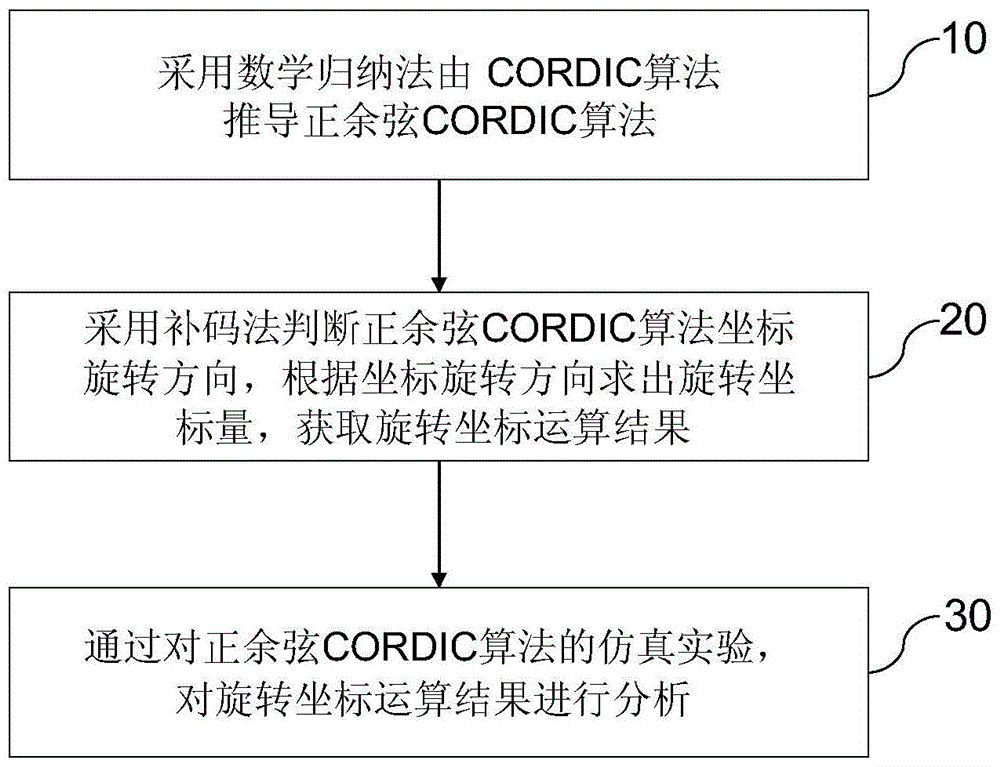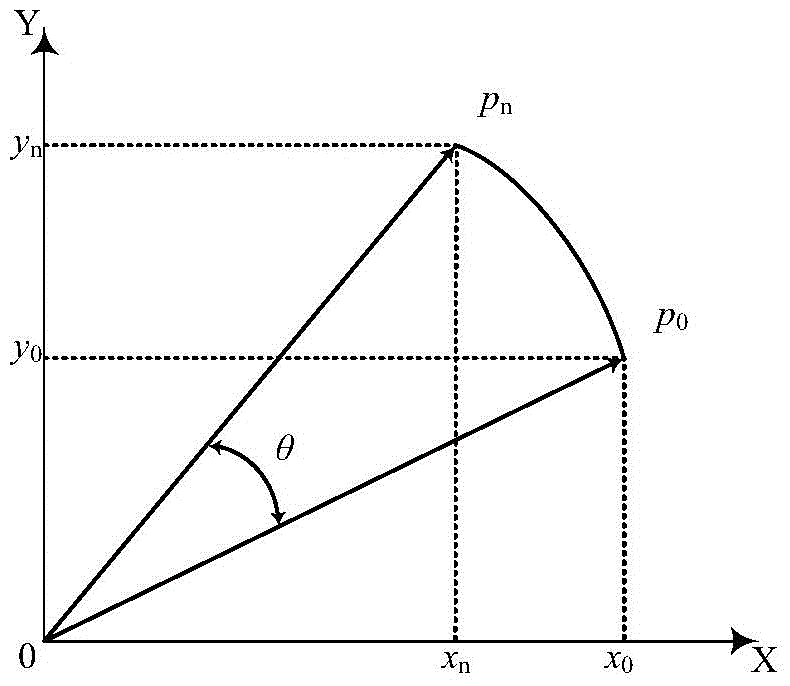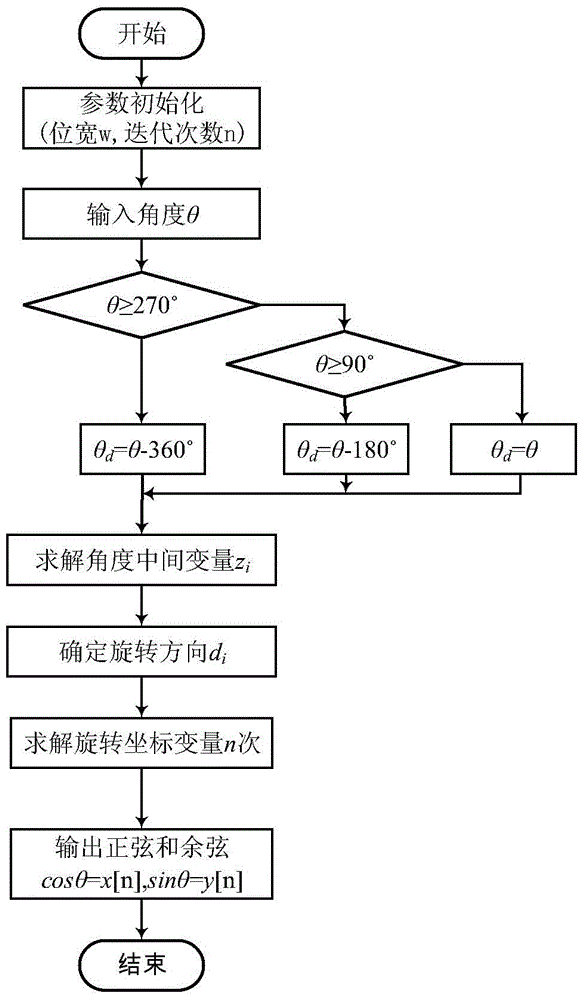A method of implementing the sine-cosine cordic algorithm using the complement code method in fpga
A technology of sine-cosine and complement method, applied in the field of sine-cosine CORDIC algorithm in the field of FPGA implementation, can solve the problems of slow operation speed, large initial delay, fast processing speed, etc., to solve real-time problems, reduce the number of comparisons, reduce time delay effect
- Summary
- Abstract
- Description
- Claims
- Application Information
AI Technical Summary
Problems solved by technology
Method used
Image
Examples
Embodiment Construction
[0016] It is easy to understand that, according to the technical solution of the present invention, those skilled in the art can propose multiple structural modes and production methods of the present invention without changing the essence and spirit of the present invention. Therefore, the following specific embodiments and drawings are only specific descriptions of the technical solution of the present invention, and should not be regarded as the entirety of the present invention or as a limitation or limitation of the technical solution of the present invention.
[0017] The present invention will be further described in detail below in conjunction with the embodiments and accompanying drawings.
[0018] figure 1 It is a method of implementing the sine-cosine CORDIC algorithm of the complementary code method in FPGA, which includes:
[0019] Step 10 uses the CORDIC algorithm to derive the sine-cosine CORDIC algorithm by mathematical induction;
[0020] Rotate the vector d...
PUM
 Login to View More
Login to View More Abstract
Description
Claims
Application Information
 Login to View More
Login to View More - R&D
- Intellectual Property
- Life Sciences
- Materials
- Tech Scout
- Unparalleled Data Quality
- Higher Quality Content
- 60% Fewer Hallucinations
Browse by: Latest US Patents, China's latest patents, Technical Efficacy Thesaurus, Application Domain, Technology Topic, Popular Technical Reports.
© 2025 PatSnap. All rights reserved.Legal|Privacy policy|Modern Slavery Act Transparency Statement|Sitemap|About US| Contact US: help@patsnap.com



